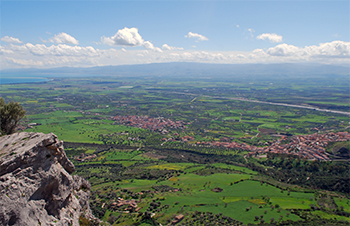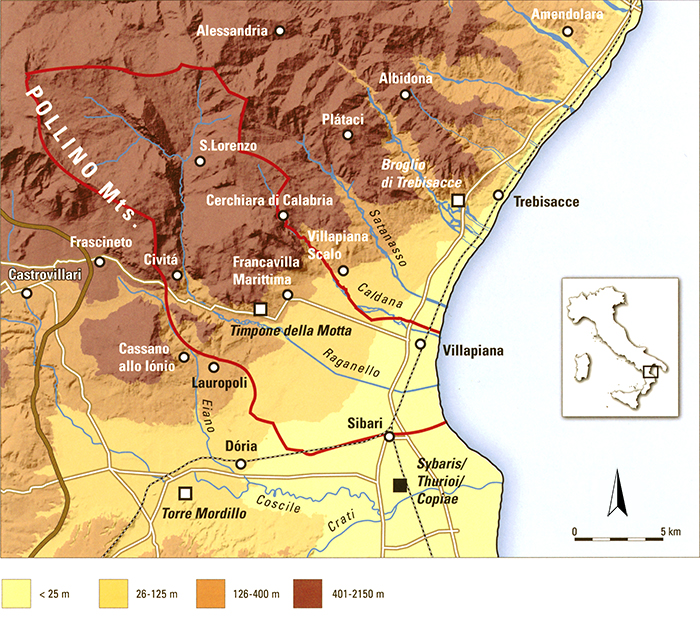Introduction

On these pages you will find the current archaeological investigations of the Groningen Institute of Archaeology (GIA) of the University of Groningen (the Netherlands), in the Sibaritide, northern Calabria (South Italy).
Since the early 1990’s, GIA has carried out archaeological investigations in the foothills of the plain of Sibari at around the protohistoric settlement of Timpone della Motta and in the valley and uplands of the Raganello basin.
At Timpone della Motta, GIA has excavated between 1991-2010 revealing a complex settlement that existed from the Middle Bronze Age into the fifth century BC, featuring domestic and cultic structures.
From 2000 onwards GIA researchers started to investigate the regional context of this paradigmatic site within the framework of the Raganello Archaeological Project (RAP). The still on-going investigations concern the up- and highlands of the upper and middle Raganello watershed area.
The archaeology of the Sibaritide and the inland Raganello valley is important for our understanding of the development of early complex society during late pre- and proto-history, and Greek colonization on the Ionian coast.

The archaeological work of GIA in northern Calabria is carried out under the aegis of the Ministero per I Beni e le Attività Culturali at Rome and maintains close contacts with Danish, Swiss and Italian researchers and institutions working in the same area. These contacts concern in particular the Ny Carlsberg Glyptotek in Copenhagen, the Archäologische Seminar der Universität Basel (ASUB), and the Museo Nazionale Archeologico della Sibaritide (MiBACT) and the Ufficio Archeologico della Sibaritide .
